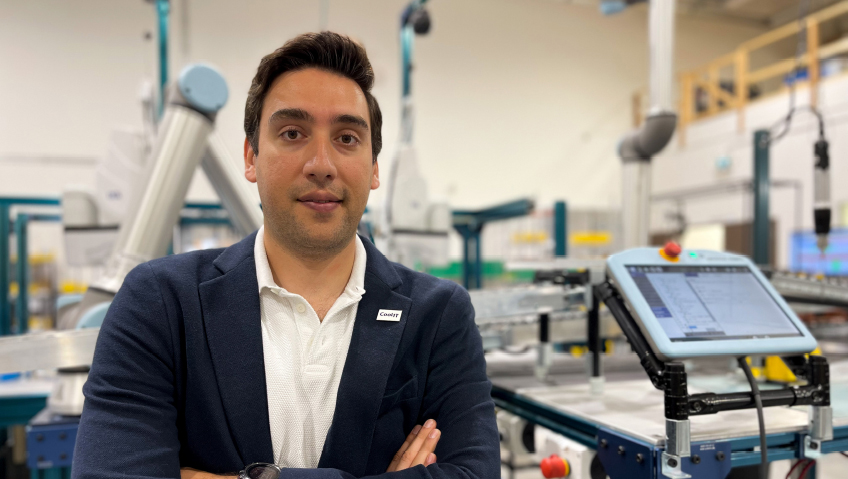Astronauts go through extensive training to contend with zero gravity and the realities of space navigation. Interestingly, the preparation is not so different for people who produce cell and gene therapies for delivery to patients. Theirs is a field of challenging complexity where health and lives are in the balance and as such, there is rigorous training in protocols and standards for everything from product development to mass-market manufacturing.
Like astronauts, biomanufacturing specialists are rare birds. Manufacturing and commercializing cell and gene therapy products – commonly referred to as advanced therapies along with vaccines that are currently dominating news headlines – requires a sizeable investment of time and resources in training qualified workers.
“COVID had the weirdly fortunate impact of really putting a spotlight on cell therapy and gene therapy manufacturing. We saw this increasing trend before the pandemic, but it has exponentially increased,” says Craig Hasilo, Chief Scientific Officer of the Canadian Advanced Therapies Training Institute (CATTI).
The coming of CATTI
CellCAN, a Canadian knowledge mobilization network in cell and gene therapies, and CCRM, a Toronto-based leader in developing and commercialising regenerative medicine-based cell and gene therapies, incorporated CATTI in March 2021 to respond to the global industry’s challenge of keeping up with talent requirements.
As everyone made the shift to digital, CATTI was ahead of the curve, with a mandate to deliver e-learning modules to train next-generation workers, scientists, and technicians. More than 170 people have already been trained by CATTI through several out of the box solutions to onboarding new talent and reskilling the workforce.
As the pandemic restrictions wax and wane, the institute is now rolling out plans for in-person training campuses to offer hands-on instruction in Montreal and in the greater Toronto area to begin with. All this happens in consultation with an education development committee of global subject matter experts from academia and industry.
“It takes a lot of reskilling and upskilling,” says Hasilo of biomanufacturing workforce development. “Much like you can’t take just anyone and send them up to the space station to be an astronaut. They’ve got to follow stringent regulations, policies and very strict protocols.”
Bucking the trend
Where most industries have been adversely affected by the global pandemic, biomanufacturing is experiencing a new high. The search to find treatments or preventative measures for COVID-19 has brought intense focus to this industry. Media and public attention, combined with government investment, has reinforced the growing interest in biomanufacturing. The time to act is now. Globally, the biotechnology market is anticipated to reach US$2.4 trillion by 2028, according to a new report by consultants Grand View Research. Here in Canada, the federal government has invested $1.2 billion toward increasing the country’s capacity and infrastructure in response to the pandemic.
CATTI, in fact, came about through an identification of a major skills gap, along with the realization that current methods of training were inefficient in developing the skilled workers needed to develop and manufacture these new therapies within reasonable timeframes.
Hasilo brought his own bona fides to this new training institute. “I’ve been fortunate enough to be on the frontline as a person responsible for training a workforce to produce cell therapies within cleanroom settings. I know the pain points well from experiencing them,” he says.
There’s also change to the sets of regulations, initially created at a time where we weren’t giving people living cellular products or genes as the drug. “Regulations were more or less created for the pill era. We have to give tremendous credit to the regulators and the government, that our ecosystem has evolved completely in the last several years.”
The primary concern is implementing novel training methods that address critical operating procedures and their governing regulations. Many people already working in the field, for example, were trained in a research laboratory but did not have the advanced training programs needed to begin mass manufacturing to get products to market. Instead, they learned from trainers and mentors largely through job shadowing and studying protocols, a slow process that takes months to years to perfect techniques.
A cleanroom is a necessity for pharmaceutical manufacturing, whether it be in pill, cell or gene therapy form. As the name suggests, a cleanroom manufacturing process includes environmental controls which filter out aerosols like dust, microbes, and other potential contaminants. The air quality is controlled, and all surfaces and equipment are routinely cleaned and decontaminated to a high set of international standards of cleanliness.
“We’re helping those we’re training to understand why they can’t take the standard practices learned in laboratories, in research settings, and translate those skills directly into cleanroom production,” says Hasilo.
“Ultimately, when you work under cleanroom manufacturing practices, it requires a very stringent set of guidelines. Good manufacturing practices require not only initial training, but also ongoing retraining,” he explains. “For example, operators must demonstrate minimally twice a year that they have the appropriate qualifications. Our aim is to establish common standards under the best practices in our industry and help open up the lines of communication.”
Bridging the gap
CATTI is designed to accelerate the market readiness of trainees while decreasing the allocated funds, per employee, for training. The focus is maximizing efficiency and bridging the gap between academic qualifications and job-ready qualifications.
As Hasilo explains, going from research to mass production is fraught with potential problems, and ensuring that a trained workforce is in place is essential to be successful and competitive. What’s more, many of the ancillary materials used in producing these advanced therapies must also be manufactured under aseptic conditions in carefully monitored cleanroom environments. This can lead to supply chain issues and production bottlenecks.
Unforeseen production delays can happen in any sector, but Hasilo stresses that industry safeguards are vital so that every single person taking a prescribed drug or advanced therapy is assured of receiving the safest, highest quality product.
“There is some leniency early in the clinical trial phases,” he says. “Requirements get very tight and stringent by the end of the clinical trial phases. As you get toward market authorization, instead of treating a small group of patients as you would in a clinical trial, you want to be able to treat any patient in the general population. The requirements that come with this bring stringent guidelines and present unique challenges.”
Getting there first
Still, pharmaceuticals, like many consumer products, are highly competitive in terms of being first to market, and countries like China and India play a significant role in the industry landscape for the supply of pharmaceutical ingredients and finished drugs. It’s important to get products researched, manufactured and approved quickly, with a critical eye on quality and safety.
Hasilo points out that there are really two drug categories – one which includes preventative types of therapies, like vaccines, and a second that includes life-changing or life-saving therapies. Those that are purposed to save lives typically receive approval faster as the benefit to risk ratio skews in favour of getting these products to market expeditiously.
As Vanessa Laflamme, CEO of CATTI, says, “I think the most worrisome element right now is that the field has grown exponentially, so you need to put in place this training capacity across Canada. However, training is often seen as the last element you’ll tackle – a very risky proposition that often results in missed targets and timelines.”
CATTI will be a game-changer, she says, as Canada is poised to be a global heavyweight in biomanufacturing with an upskilled workforce driving it forward. Get ready!






